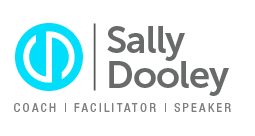In the current context of rapid, ongoing and borderless change many leaders are struggling to keep their heads above water. The solution has been to try and do more with less yet the reality is resources are already stretched to capacity. It is clear that working harder is not going to get the outcomes needed. What is required is a shift, seismic in nature, which propels us out of current mindsets and practices into a new and more effective way of thinking, utilising the masses of untapped potential that lie dormant within each one of us.
Fortunately, we know how to create those shifts! Research consistently shows that we can change our thinking and as a result, change the outcomes we are getting.
Author Anais Nin wisely noted: ‘We don’t see things as they are, we see them as we are’. However, our tendency is to be so strongly fused with the way we see things that we leave ourselves with out many options or alternatives to see things differently.
To achieve different and better outcomes involves a willingness to change the way we see things and, as a result, the way we do things. Researcher, Dr K. Anders Ericsson, has demonstrated that improved performance is not a function of gaining more knowledge and more experience. In fact, these can often serve to reinforce current practice rather than stretch and challenge individuals to develop and improve. Instead, improved performance and more desirable outcomes has been linked to a process of ‘deliberate practice’ which involves the following iterative process:

(Adapted from Dr K. Anders Ericsson, Deliberate Practice and Acquisition of Expert Performance: A General Overview, 2008)

Reflection and action:
How can you apply this process of deliberate practice to make a change in your ‘business as usual’ approach this week?
Identify a challenging situation. Imagine this situation through the perspective of each key stakeholder. What did you notice? How can these insights inform a more effective approach? What could you do differently?
